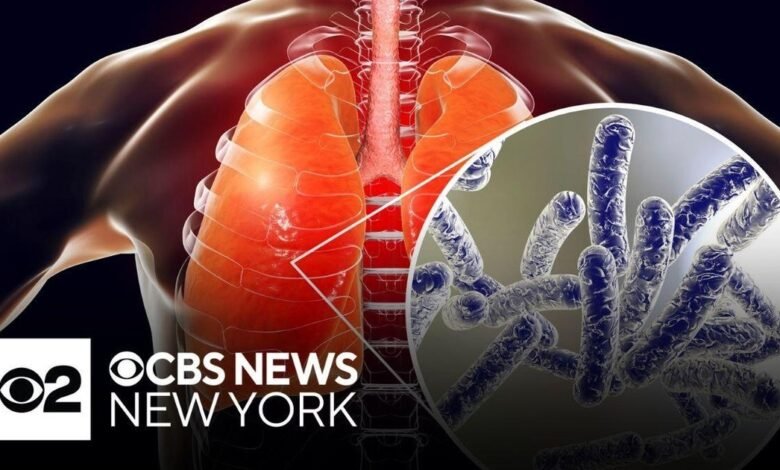Deadly Legionnaires’ Outbreak Shocks NYC – Health Officials Confirm!

Understanding Legionnaires’ Disease: A Recent Outbreak in the Bronx
In recent weeks, health officials in New York City have reported cases of Legionnaires’ disease linked to an apartment building in the Bronx. This alarming situation has drawn attention to not only the specifics of the outbreak but also to the wider implications for public health and safety. In this post, we will delve into what Legionnaires’ disease is, how it spreads, the response from health officials, and what residents can do to protect themselves and their loved ones.
What is Legionnaires’ Disease?
Legionnaires’ disease is a severe form of pneumonia caused by the Legionella bacteria. These bacteria are generally found in water systems, whether at home or in large buildings. The disease is not transmitted from person to person but instead spreads when a person inhales mist or vapor from water contaminated with Legionella. Common sources include cooling towers, hot tubs, and large plumbing systems.
The symptoms of Legionnaires’ disease can mimic those of other forms of pneumonia, making diagnosis challenging. Early signs include fever, chills, cough, muscle aches, and headaches. If left untreated, the infection can become serious, particularly in vulnerable populations such as the elderly or those with weakened immune systems.
Recent Outbreak in the Bronx
Recently, health officials in New York City identified cases of Legionnaires’ disease associated with an apartment building in the Bronx. This particular incident has raised concerns about how outbreaks can occur in residential settings and the safety of the water supply in urban environments.
As reports emerged, the New York City Department of Health and Mental Hygiene swiftly began investigating the situation. They have taken measures to identify the source of the outbreak by conducting water tests and analyzing conditions within the building’s plumbing systems.
The Role of Health Officials
The response from health authorities has been prompt. Health officials have issued public advisories urging residents to be vigilant about potential symptoms associated with Legionnaires’ disease. They have emphasized the importance of seeking medical attention if symptoms arise, particularly among vulnerable groups.
Additionally, city officials have been proactive in sharing information with residents about the significance of maintaining safe water systems in communal living environments. They have also launched educational campaigns aimed at informing the public about how to minimize risks associated with waterborne bacteria.
How Legionnaires’ Disease Spreads
Understanding how Legionnaires’ disease spreads is crucial for prevention. The Legionella bacteria thrive in warm water environments, often found in places such as:
- Cooling Towers: Common in many large buildings, these systems can disperse water vapor into the air, potentially inhaled by people nearby.
- Hot Tubs: If not properly disinfected, these can be a breeding ground for bacteria.
- Large Plumbing Systems: Inadequate maintenance or stagnant water can promote bacterial growth.
- Decorative Fountains: These may also be a source of aerosolized water.
It’s important to note that simple household activities, like showering or using tap water, can also lead to exposure, especially if the water source carries the bacteria.
Identifying Symptoms and Seeking Medical Attention
Awareness of the symptoms of Legionnaires’ disease is vital for a prompt response. Signs can develop anywhere from 2 to 14 days after exposure and may include:
- Fever: Often one of the first signs of infection.
- Cough: This can be persistent and increasingly severe.
- Shortness of Breath: Difficulty breathing is a serious symptom that warrants immediate medical attention.
- Muscle Aches: General feelings of discomfort and fatigue.
- Headaches: Can accompany other symptoms.
- Gastrointestinal Symptoms: Such as diarrhea, nausea, or vomiting, may occur.
If you or someone you know is experiencing these symptoms, especially following exposure to water sources that may be contaminated, it is critical to seek medical care as soon as possible. Tests such as chest X-rays and blood tests can help diagnose Legionnaires’ disease.
Preventing Legionnaires’ Disease
For residents and community members, understanding how to prevent the spread of Legionnaires’ disease is essential. Here are some guidelines:
- Regular Water Testing: Property managers should conduct routine water quality tests in their buildings, especially in large systems.
- Maintenance of Cooling Towers: Regular cleaning and disinfection protocols should be in place to manage potential bacteria growth.
- Proper Plumbing Checks: Ensuring that all plumbing systems are well-maintained and free of stagnant water is crucial to reducing risk.
- Awareness and Education: Residents should be educated about the risks of Legionnaires’ disease and encouraged to report any water quality issues.
The Importance of Public Health Initiatives
This outbreak serves as a reminder of the importance of public health initiatives aimed at controlling waterborne diseases. Health authorities must implement strict regulations to ensure the safety of water systems, particularly in urban settings where large populations are concentrated.
Education plays a key role; communities must be informed about the risks associated with Legionnaires’ disease and the importance of preventive measures. By promoting awareness and ensuring active monitoring of water quality, the potential for future outbreaks can be minimized.
Concluding Thoughts
In conclusion, the recent cases of Legionnaires’ disease in the Bronx highlight the ongoing concerns about waterborne diseases in urban environments. Health officials are working diligently to manage and mitigate this outbreak by investigating the source and educating residents on the symptoms and prevention strategies.
Residents are urged to remain vigilant and informed. By understanding how Legionnaires’ disease spreads, recognizing its symptoms, and following preventive measures, individuals can protect themselves and their communities from this infectious disease.
Ultimately, this outbreak is not just a public health issue; it is a wake-up call for all of us to take water safety seriously. Continued efforts in monitoring, maintenance, and education will be crucial in preventing similar incidents in the future.
Summary of Key Points
- Legionnaires’ disease is a serious form of pneumonia caused by Legionella bacteria.
- A recent outbreak in a Bronx apartment building has raised public health concerns.
- Health officials are actively investigating the outbreak and have advised residents to be aware of symptoms.
- Legionnaires’ disease spreads through inhalation of aerosolized water containing the bacteria.
- Common sources include cooling towers, hot tubs, and large plumbing systems.
- Residents should be aware of symptoms and seek medical attention if they occur.
- Preventive measures include regular water quality testing and community education.
- This outbreak emphasizes the importance of safeguarding water systems in urban environments.





